March struts in with a promise.
Frost can still linger some nights.
But, oh, the garden? It’s awakening.
Choosing the right blooms now will pay off big time in color and charm.
Below are ten stellar picks. Let’s dive in—kinda like popping a surprise spring in your backyard.
1. Pansies
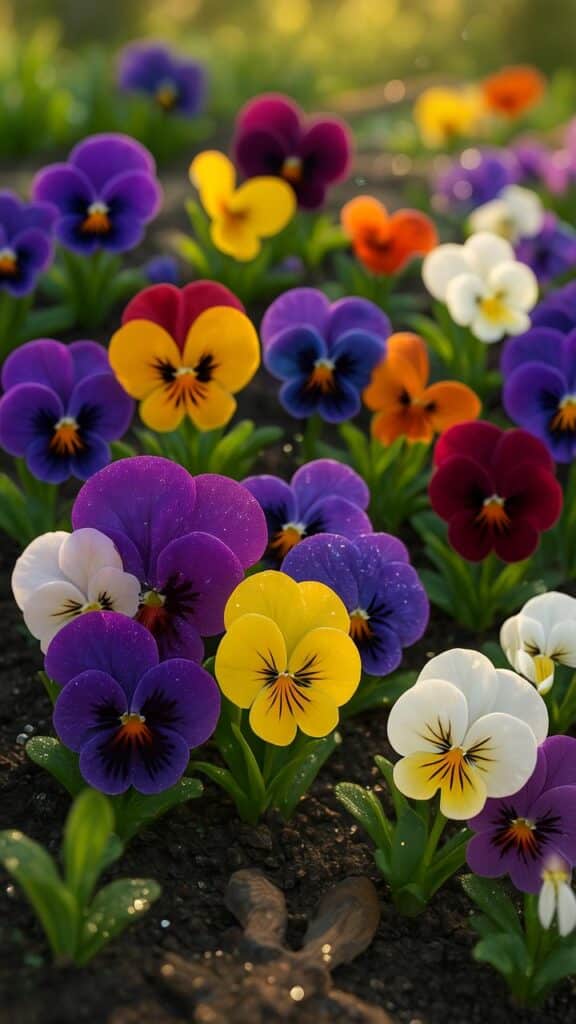
Pansies are tough lil’ champs.
They laugh at a light frost and flash bold faces in purple, yellow, blue.
Plant them in containers or borders—they’ll pop color fast.
These got us covered before other flowers wake up.
And bonus—they’re biology ninjas, fighting pests while looking cute.
Throw in some fertilizer and watch ‘em perk right up.
2. Violas

Think of violas as pansy’s petite cousin.
Tiny flowers fill the space with delicate charm.
Great in pots, window boxes, borders—everywhere tiny wonders.
They don’t mind partial shade and keep blooming if you snip spent buds.
They whisper color without hogging attention.
Like little garden confetti.
3. Snapdragons

Snapdragons shoot up like magic towers.
Touch the bloom base and watch it snap—freaky but fun.
They pack loads of vertical flair in cool early spring.
Colors range from pale pastels to electric neon.
They thrive if planted in March and snipped after blooms fade.
Then they’ll usually pop again for another round.
4. Calendula (Pot Marigold)

Calendula feels like sunshine landed on earth.
Oranges, yellows, deep creams—happy vibes galore.
These flowers aren’t just pretty; they repel bugs and feed pollinators.
Seeds go straight into soil once frost’s gone.
They bloom fast—about 8 weeks—and last till fall.
Plus, petals are edible; great in salads or homemade tea.
5. Primrose
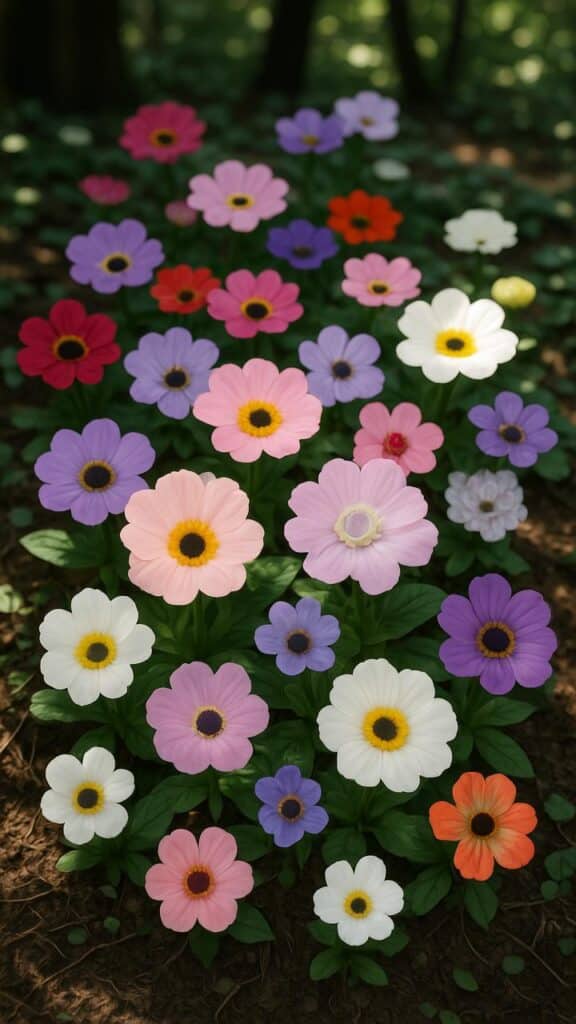
Primroses hug the ground with colorful rosettes.
Shades of pink, red, violet—they beg to be noticed.
Partial shade suits them best; they love cool, moist soil.
They spread gently, like natural confetti in shady nooks.
Easygoing, and sweet-smelling too.
Classic woodland beauty.
6. Hellebore (Lenten Rose)

Hellebores are drama queens of spring.
Blooms peek out even under lingering snow.
Colors range from white and pink to deep maroon.
They adore humus-rich, well-drained soil in part shade.
Deer usually pass ‘em by—bonus if you’ve hungry wildlife nearby.
They give winter flops a run for the money.
7. Dianthus
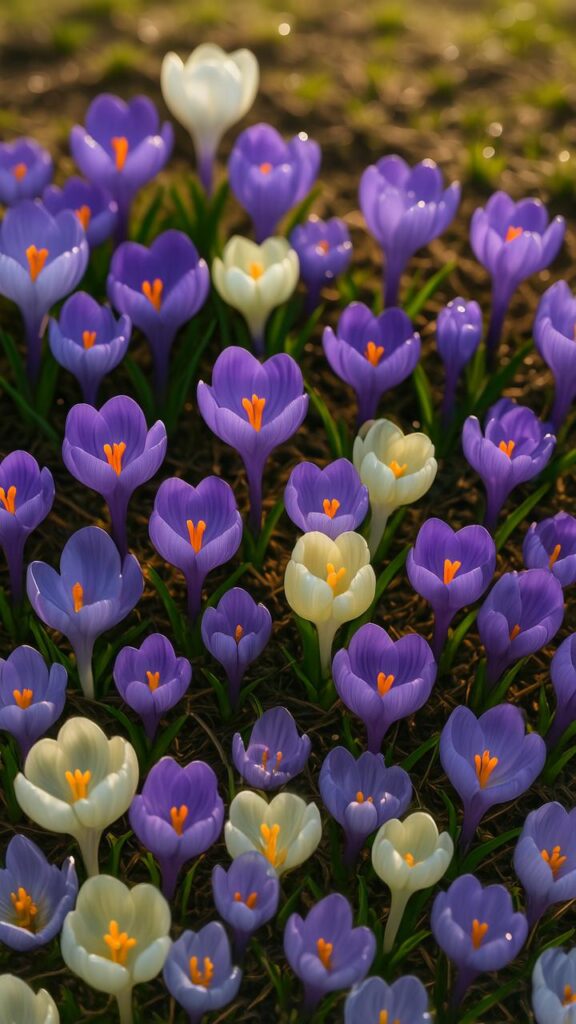
Dianthus pop with ruffled, delicate petals.
Pink, white, red—sometimes all at once.
They’ve got a spicy, clove-like scent (kinda nostalgic, kinda quirky).
They prefer full sun and well-drained dirt.
Once they take root, they’re pretty drought tolerant.
Great edge-of-path or bed fillers.
8. Crocus
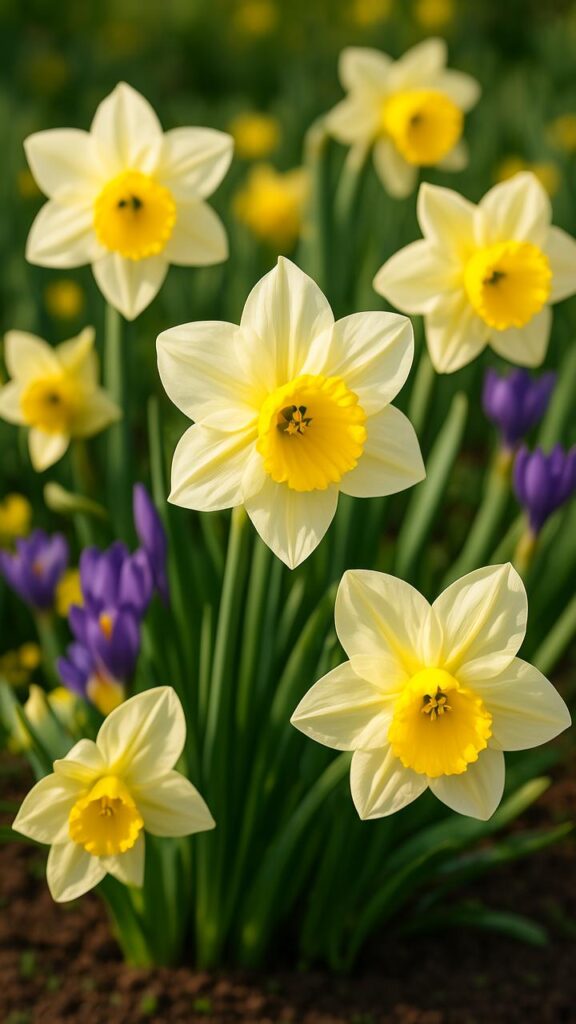
Crocus bulbs leap up early march—tiny pops of purple, yellow, white.
They naturalize over years, making mini swathes of color.
Perfect for rock gardens or borders.
They vanish after bloom but bulbs stick it out underground.
They’re small but bold, sneaking in pastel surprises.
Worth every bulb you plant.
9. Daffodils (Jonquils too)
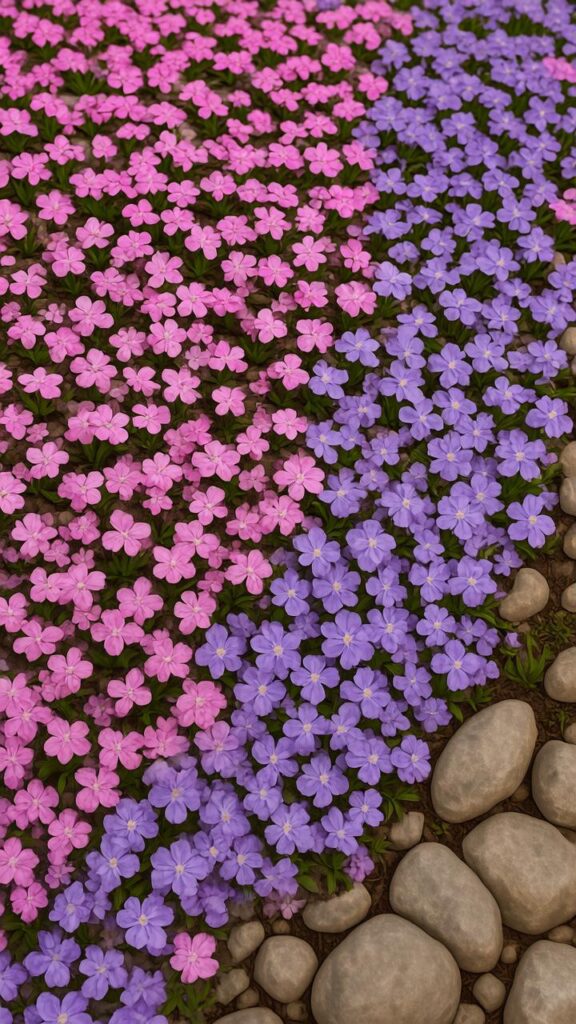
Daffodils are the ancient heralds of spring.
Trumpet shapes, sunny shades—everybody recognizes them.
Jonquils are the chill cousin, sweet-smelling and glossy.
Plant bulbs in fall—they bloom in March and then hang around as greenery.
They’re deer-resistant—no nibbling here.
They bloom reliably year after year—set and forget.
10. Creeping Phlox
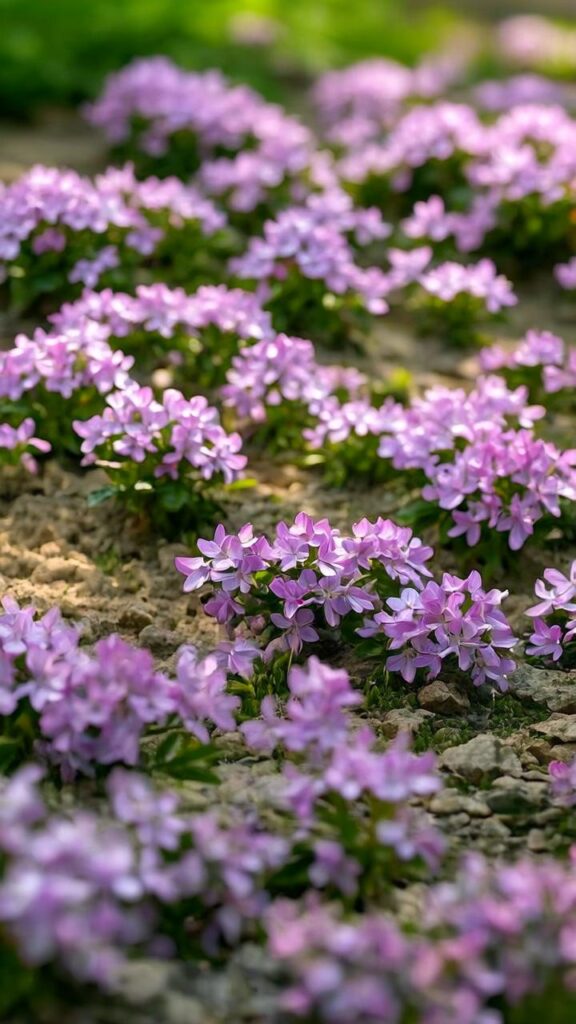
Creeping phlox spreads out like wild garden graffiti.
Masses of pink, white, lavender petals carpet the ground.
Full sun lover, but works in filtered shade too.
They trail over rocks, walls, and slopes with grace.
Low-maintenance, tough, and oh-so-pretty.
Match them with bulbs or shrubs for layered spring tones.
Why March?
March offers cool soil and days long enough to nurture seedlings.
These blooms handle the frost dance.
Plant now, and your April-May will explode in color.
Most above are cool-season annuals or bulbs.
They bloom fast and cheerfully.
They match well together—like aesthetic puzzle pieces.
Soil & Sun: Quick Tips
- Soil: Mix in compost for drainage and nutrients.
- Sunlight: Sunnier plants (daffodils, dianthus) want full sun. Shade lovers (hellebore, primrose) do well with partial.
- Frost Care: Cover delicate newcomers if a cold snap hits.
- Feeding: A bit of slow-release fertilizer keeps blooms vigorous.
- Watering: Moist but not swampy—especially right after planting.
Blooming Mix & Match
- Edge container: pansies + violas + creeping phlox = vibrant micro-show.
- Shady nook: hellebore + primrose = dreamy, secluded corner.
- Border standout: snapdragons zig-zag behind daffodils for height play.
- Ground candy: creeping phlox spreads between groupings of bulbs.
- Edible pockets: calendula in vegetable beds offers color and pest help.
Maintenance
- Deadheading: Snip spent flowers to encourage new blooms.
- Division: Every few years for perennials like hellebore or phlox keeps them from crowding.
- Mulch: A fine layer helps soil stay consistent temp/moisture.
- Weeding: A breeze in March—just stay ahead for less stress later.
Pollinator Perks
All these blossoms sweet-talk bees and butterflies.
Calendula and snapdragons are major nectar stops.
Plus, more pollinators = better veggie yields if you grow edibles.
Planning by Zone (PS: Check Your Zone!)
These flowers generally suit Zones 4–9.
Check your local frost dates—adjust planting accordingly.
In colder zones, watch soil temp and cover tender annuals.
Warmer zones? Some may bloom earlier or need afternoon shade.
Quick Planting Guide
| Flower | Planting Type | Sunlight | Soil | Notable Feature |
|---|---|---|---|---|
| Pansies | Transplants | Full–partial sun | Well-drained | Early color burst |
| Violas | Transplants | Partial sun | Moderate moisture | Tiny & sweet |
| Snapdragons | Seeds/transplants | Full sun | Well-drained | Tall & quirky |
| Calendula | Direct seed | Full sun | Light, rich soil | Edible petals |
| Primrose | Transplants | Shade–sun | Moist & shady | Cottage feel |
| Hellebore | Transplants | Part shade | Humus-rich | Winter-surprise |
| Dianthus | Seeds/transplants | Full sun | Well-drained | Clove-scented |
| Crocus (bulbs) | Bulbs | Sun to shade | Loose, free-drain | Naturalizer |
| Daffodil (bulbs) | Bulbs | Full–partial sun | Rich, well-drained | Spring classics |
| Phlox creeping | Transplants | Full sun | Average & drained | Spreading blanket |
Mixing for a Masterpiece
- Early boost: crocus + daffodils for a swift spring punch.
- Layer heights: short violas/pansies front, snapdragons behind.
- Texture combo: broad leaf hellebore + fine phlox at their feet.
- Container joy: throw pansies, violas, and dianthus in a big pot—instant charm.
Human Notes 🌱
I once planted violas thinking I’d watch them pop overnight.
They snuck up on me day by day—sneaky, silent color.
I love that feeling when I notice them, like finding Easter eggs in grass.
Hellebore that summer I forgot also bloomed in December—seriously.
It’s like they laugh at calendars.
That memory makes me grin.
Final Pep Talk
Plant these ten beauties and your garden gets a spring makeover.
March might still feel chilly—but underground and in seedlings, life’s buzzing.
Let’s make your outdoor space pop with early blooms that build momentum for the whole season.
Go ahead—get your gloves, dig holes, toss seeds, plant bulbs.
Then watch March’s magic unfold in April.
Your garden will thank you with colors, textures, scents and smiles.
